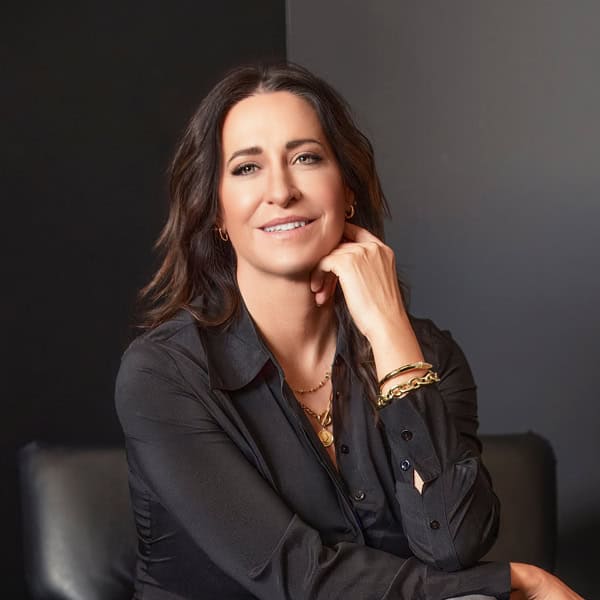Blogs
Kyphosis vs Scoliosis: Key Differences Explained

The spine’s alignment depends on its vertebrae being in place, along with the spine’s healthy curves in each of its main sections. A loss of the spine’s healthy curves can affect the spine, its surroundings, and the entire body in a number of ways. Kyphosis and scoliosis are spinal conditions that cause an unhealthy spinal curve to develop, but they are distinct conditions with unique characteristics.
There are a number of spinal conditions that cause a loss of healthy spinal curves, two of which are kyphosis and scoliosis. While kyphosis causes a forward rounding of the upper back, scoliosis causes the spine to bend unnaturally to the side and rotate.
The spine’s healthy curves make it stronger, more resistant to injury, more flexible, and help evenly distribute mechanical stress.
What is Kyphosis?
Kyphosis refers to the thoracic spine’s (middle/upper back) curve type that bends outwards, and while it’s normal for the degree of kyphosis to vary from one person to the next, if kyphosis is excessive, it can become problematic.
A typical range of thoracic kyphosis is considered to fall between 20 and 45 degrees, with hyperkyphosis, also known simply as kyphosis, commonly diagnosed at 50+ degrees.
An excessive outward-bending spinal curvature in the thoracic spine can cause a noticeable rounding forward of the shoulders and upper back, and this postural change can cause pain and unhealthy movement patterns to develop.
If the upper back has an excessive curvature, it can contribute to the development of forward head posture, where the head shifts forward in an effort to maintain a level eye line and gaze, and this increases the weight of the head on the cervical spine (neck), potentially causing a loss of the neck’s healthy curve.
Hyperkyphosis can cause the upper body’s weight to be unevenly distributed over the torso and lower body and an uneconomical gait to develop.
 Unhealthy postural and movement changes caused by an unnatural spinal curvature can cause uneven wear and tear on the spine and body, and both kyphosis and scoliosis are capable of disrupting spinal alignment, posture, and healthy movement patterns.
Unhealthy postural and movement changes caused by an unnatural spinal curvature can cause uneven wear and tear on the spine and body, and both kyphosis and scoliosis are capable of disrupting spinal alignment, posture, and healthy movement patterns.
What is Scoliosis?
Scoliosis is a structural spinal condition that causes the spine to develop an unnatural sideways spinal curve with rotation, making it a 3-dimensional condition.
Current estimates have close to seven million people diagnosed with scoliosis in the United States alone, so it’s a condition that warrants awareness.
While there can never be treatment guarantees, early detection and intervention is directly linked to treatment success, and as a progressive condition triggered by growth, childhood scoliosis should always be treated proactively.
Scoliosis introduces a lot of uneven forces to the body that disrupt its overall symmetry through asymmetrical postural changes; in many cases, uneven shoulders, shoulder blades, and a rib cage arch are the earliest indicators of scoliosis.
Scoliosis affects all ages, but is most commonly diagnosed during adolescence as adolescent idiopathic scoliosis (AIS).
Scoliosis and kyphosis share similarities and differences, and when they occur together, it’s known as kyphoscoliosis and means an unnatural spinal curve has developed in the coronal plane (front to back, back to front) and the sagittal plane (side to side).
So what are the key differences between kyphosis and scoliosis?
Kyphosis and Scoliosis: Key Differences
So what are the key differences between kyphosis and scoliosis?
Kyphosis and scoliosis are both spinal conditions that cause a loss of the spine’s healthy curves, and while they are both measured in degrees, can get worse over time, and require treatment, there are also some key differences.
Kyphosis and scoliosis have different types, and the first step to addressing either with treatment is determining a condition’s underlying cause.
Types of Kyphosis
The types of kyphosis include postural kyphosis, Scheuermann’s kyphosis, and age-related kyphosis.
Postural kyphosis is the simplest to treat because it’s not a structural condition; it’s caused by chronic poor posture, the curve is flexible, a position change can affect the curve, and this type generally responds well to lifestyle guidance and physical therapy.
Scheuermann’s kyphosis is structural so it won’t respond to physical therapy alone; the curve is rigid, and this type is usually discovered during adolescence and can get worse with growth.
Scheurmann’s kyphosis can involve vertebrae of the spine being malformed, such as vertebrae being more triangular in shape, causing them to wedge forward (anterior wedging) and the spine to develop an excessive kyphotic curve.
Age-related kyphosis affects older adults and can be caused by spinal degeneration that often starts in the discs and/or injury as the spine becomes increasingly weaker and unstable; in these cases, fall prevention is a focus of treatment.
Types of Scoliosis
As mentioned, scoliosis also has different types from idiopathic scoliosis to neuromuscular and degenerative scoliosis.
Just as kyphosis can affect all ages, so too can scoliosis, and the most common type found across all age groups is idiopathic scoliosis, meaning no known cause, and this type accounts for approximately 80 percent of diagnosed cases.
 The most prevalent type of scoliosis overall is adolescent idiopathic scoliosis diagnosed around the age of 11 or 12 in females, a little later in males, and as scoliosis is progressive and triggered by growth, this age group is the most at risk for rapid advancement due to the stage of growth they are in.
The most prevalent type of scoliosis overall is adolescent idiopathic scoliosis diagnosed around the age of 11 or 12 in females, a little later in males, and as scoliosis is progressive and triggered by growth, this age group is the most at risk for rapid advancement due to the stage of growth they are in.
A focus of adolescent scoliosis treatment is on counteracting progression despite the constant trigger of growth occurring, and this involves working towards significant curvature reductions.
Neuromuscular scoliosis and degenerative scoliosis are associated with known causes, and my neuromuscular scoliosis patients tend to be severe because the scoliosis is caused by the presence of a larger neuromuscular condition like spina bifida, cerebral palsy, or muscular dystrophy.
When treating neuromuscular scoliosis, the larger neuromuscular condition has to be the focus of treatment as it’s causing a disconnect in communication between the brain and the muscles that support the spine.
Degenerative scoliosis affects older adults and is caused by natural age-related spinal degeneration that usually starts with the discs degenerating (degenerative disc disease).
A focus of treatment for degenerative scoliosis patients is fall prevention as the spine can become increasingly unbalanced and unstable.
Conclusion
So as you can see, both kyphosis and scoliosis have different types that largely affect adolescents and aging adults, and both conditions can range in severity from mild to severe.
In addition, both kyphosis and scoliosis can get worse over time if left untreated, or not treated proactively.
Both conditions also have to be comprehensively assessed and classified based on patient age, curve size, severity, and cause; treatment is shaped by causation.
A significant difference is that kyphosis causes the spine to develop an unnatural backward-bending curve, while scoliosis causes an unnatural sideways-bending and rotating curve to develop.
So the types of unnatural curves caused by kyphosis and scoliosis are very different, and while hyperkyphosis affects the thoracic spine, scoliosis can develop in any of the spine’s main sections, though the thoracic spine is most commonly affected.
The thoracic spine is the largest spinal section, the only section that attaches to the rib cage, and facilitates a wide range of trunk motion, so a loss of its healthy curve can affect spinal function in a number of ways.
Both kyphosis and scoliosis can cause postural changes, movement changes, and pain, and both require treatment.
While there are no treatment guarantees, kyphosis and scoliosis treatment plans need to be customized and often involve a combination of condition-specific chiropractic care, exercise rehabilitation programs, and corrective bracing.
Here at the Scoliosis Center of Utah, the goal of treatment is to restore as much of the spine’s healthy curves as possible for more balance, strength, and stability.

Dr. Katalina Dean
Dr. Katalina Dean is the founder and clinical director of Scoliosis Center of Utah, in Midvale, UT. Her team specializes in posture correction, spinal rehabilitation, and non-invasive scoliosis care and bracing.
Call Today
Do You Qualify for Care?
Schedule an Appointment Below
